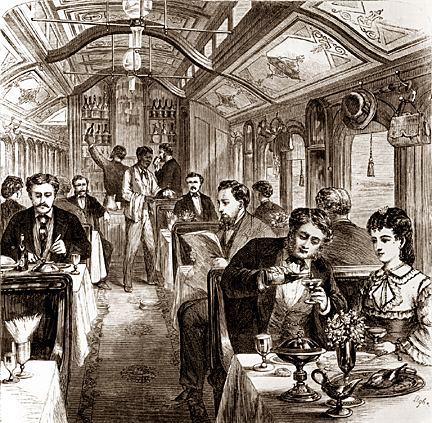 There
was a time when eating dinner aboard a train was an experience. Fine
table linen, topped with elegant china and silverware were the norm, but
then along came Amtrak and the dining experience became nothing more
than passengers going to the food trough for some sort of sustenance
while traveling. And like the airlines, the railroads succumbed to
economics and the changes in passenger’s eating habits.
There
was a time when eating dinner aboard a train was an experience. Fine
table linen, topped with elegant china and silverware were the norm, but
then along came Amtrak and the dining experience became nothing more
than passengers going to the food trough for some sort of sustenance
while traveling. And like the airlines, the railroads succumbed to
economics and the changes in passenger’s eating habits.
But let’s take a step back in time to those days of yesteryear when fine
silver flatware and hollowware graced the dining car tables.
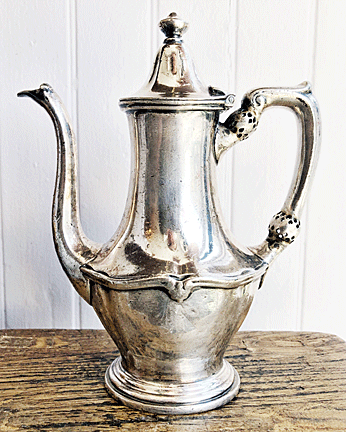 Railroad
silver, which is comprised of hollowware such as pitchers and teapots,
as well as flatware like knives and forks, is unique because it attracts
sterling silver and railroadiana collectors alike.
Railroad
silver, which is comprised of hollowware such as pitchers and teapots,
as well as flatware like knives and forks, is unique because it attracts
sterling silver and railroadiana collectors alike.
Early rail passengers never dreamed that one day they would take meals
in dining cars at tables covered with white linen tablecloths set with
silver and china. At that point, trains didn’t even have dining cars let
alone any sort of food service. Dining cars, even in their early
primitive form wouldn’t appear for another three decades.
Instead patrons rode the rails on uncomfortable wooden benches, without
sleeping or eating arrangements of any sort.
In the 1840s and 1850s, once the novelty of rail transportation wore
off, there was a push by consumers to improve the riding experience.
George Pullman, a Chicago contractor, was at the forefront of this
movement. One of his innovations was the sleeping car. On January 10,
1853, the first meal was served on a train when the Baltimore and Ohio
(B & O) Railroad contracted a caterer for its trains between Baltimore,
Maryland and Wheeling, West Virginia.
A decade later, passengers no longer had to scarf down meals on train
stops or bring their own food aboard as the Philadelphia, Wilmington,
and Baltimore Railroad unveiled dining cars.
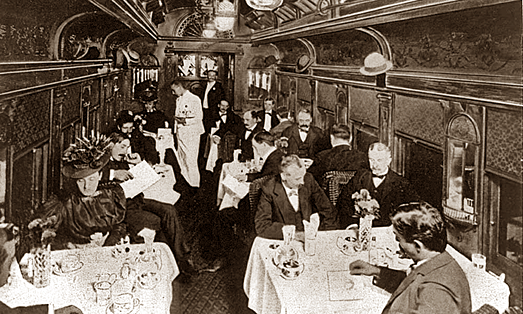
However, these early dining cars were far from luxurious, but after the
Civil War the quality of the train-dining experience improved
dramatically. In 1868, Pullman rolled out Delmonico’s. Named after the
famous New York eatery, it was the first fancy restaurant on a train—the
Golden Age of train travel had begun.
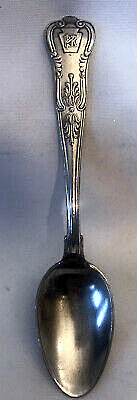 Railroads
promoted dining cars to would-be passengers as being fancier than New
York City hotels. Travelers were often invited to choose among
five-course meals with dozens of options. Interestingly, the dining cars
consistently operated at a loss because of their extravagance, but they
were seen as necessary part of turning train travel into a “Grand Tour”
experience.
Railroads
promoted dining cars to would-be passengers as being fancier than New
York City hotels. Travelers were often invited to choose among
five-course meals with dozens of options. Interestingly, the dining cars
consistently operated at a loss because of their extravagance, but they
were seen as necessary part of turning train travel into a “Grand Tour”
experience.
Just sitting in the dining car became an adventure in
itself. There was often a romantic aspect when two strangers shared a
table and perhaps a bottle of wine. Who could forget the intimate dining
car scene with Cary Grant, on the 20th Century Limited, in the Alfred
Hitchcock film, “North By Northwest?”
Of the many categories for collectors of railroad
memorabilia none captures the golden age of travel more than dining car
objects. The good news is that there are many pieces still available at
reasonable prices.
Not surprisingly, the silverware used in these rolling dining rooms was
only the finest. Many train companies commissioned some of the top
silver manufacturers to produce their flatware, including International
Silver Company, Meriden Britannia, Smith Silversmiths, Gorham
Manufacturing, and Reed and Barton. Though some railroads had their own
lines of flatware and hollowware, most just ordered what the
manufacturers produced for fancy hotels and stamped their logos on them.
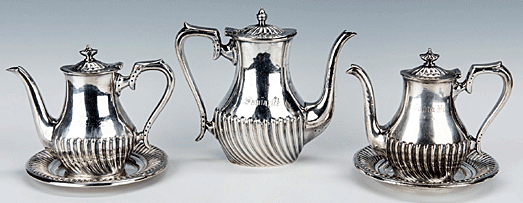
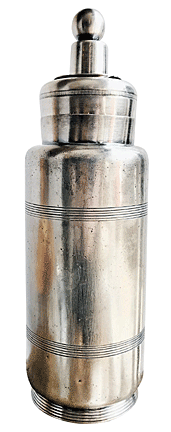 Railroad
silver was actually “Nickel Silver,” an alloy of copper, nickel and zinc
made by many companies. Meriden Britannia Company made most of the early
pieces. After 1898, the company became a subsidiary of the International
Silver Company. Between 1900 and 1930, the Gorham Manufacturing Company
and Wallace Company produced railroad silver. It was also made by Reed &
Barton and Smith Silversmiths. The English firm of Harrison & Howson, of
Sheffield made pieces for the Santa Fe railroad.
Railroad
silver was actually “Nickel Silver,” an alloy of copper, nickel and zinc
made by many companies. Meriden Britannia Company made most of the early
pieces. After 1898, the company became a subsidiary of the International
Silver Company. Between 1900 and 1930, the Gorham Manufacturing Company
and Wallace Company produced railroad silver. It was also made by Reed &
Barton and Smith Silversmiths. The English firm of Harrison & Howson, of
Sheffield made pieces for the Santa Fe railroad.
Today collectors look for cocktail shakers and
coffeepots with Union Pacific logos, platters and cutlery with the Great
Northern Railway’s monogram, and food warmers with Southern Pacific
insignias. These stamps and impressions, which served as advertisements
for the rail companies at the time, make railroad silver easily
identifiable for collectors today.
Railroad silver can also be identified by its weight. Though silverware
manufacturers designed these pieces to look handsome, they also had to
be durable, so railroad silver was often very heavy. For example, much
of the hollowware made for railroads had handles that were
silver-soldered to the main portion of the piece.
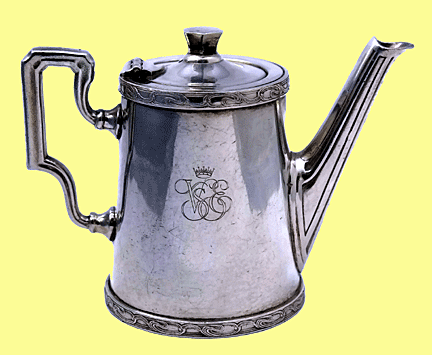 Collectors
of railroad silver sometimes try to accumulate entire sets, which can be
difficult because rare pieces such as cheese scoops, menu holders, and
sugar tongs weren’t manufactured in the same quantities as knives,
forks, and spoons.
Collectors
of railroad silver sometimes try to accumulate entire sets, which can be
difficult because rare pieces such as cheese scoops, menu holders, and
sugar tongs weren’t manufactured in the same quantities as knives,
forks, and spoons.
Additionally, the more intricate the details on a piece of railroad
flatware and hollowware, the more collectible it becomes. For example,
those with curving handles or unique designs such as a fleur-de-lys are
more desirable than pieces with more basic designs. And while the era of
collectible railroad silver dates from the 1880s all the way through the
middle of the 20th century, the early pieces tend to be more prized.
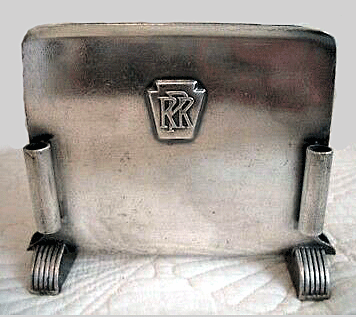 All
railroad silver is marked and included the initials, name or emblem of
the railroad. Services could consist of as many as 30 pieces. Some of
the more unusual pieces were corn holders, a toothpick stand, cocktail
shakers, and crumb trays.
All
railroad silver is marked and included the initials, name or emblem of
the railroad. Services could consist of as many as 30 pieces. Some of
the more unusual pieces were corn holders, a toothpick stand, cocktail
shakers, and crumb trays.
The shapes may have been plain and heavy but the designs were often
quite elegant with engraved motifs. Silver for the Burlington routes had
fluting and vase finials on the covers of coffeepots and teapots. It is
marked with raised initials “B.T.” When it was made by the Mulholland
Bros., Inc. of Aurora, Illinois it is marked, “C.B. & Q., Mulholland
Bros. and with similar marks.
< Back to Collecting Archives
Next Article >
